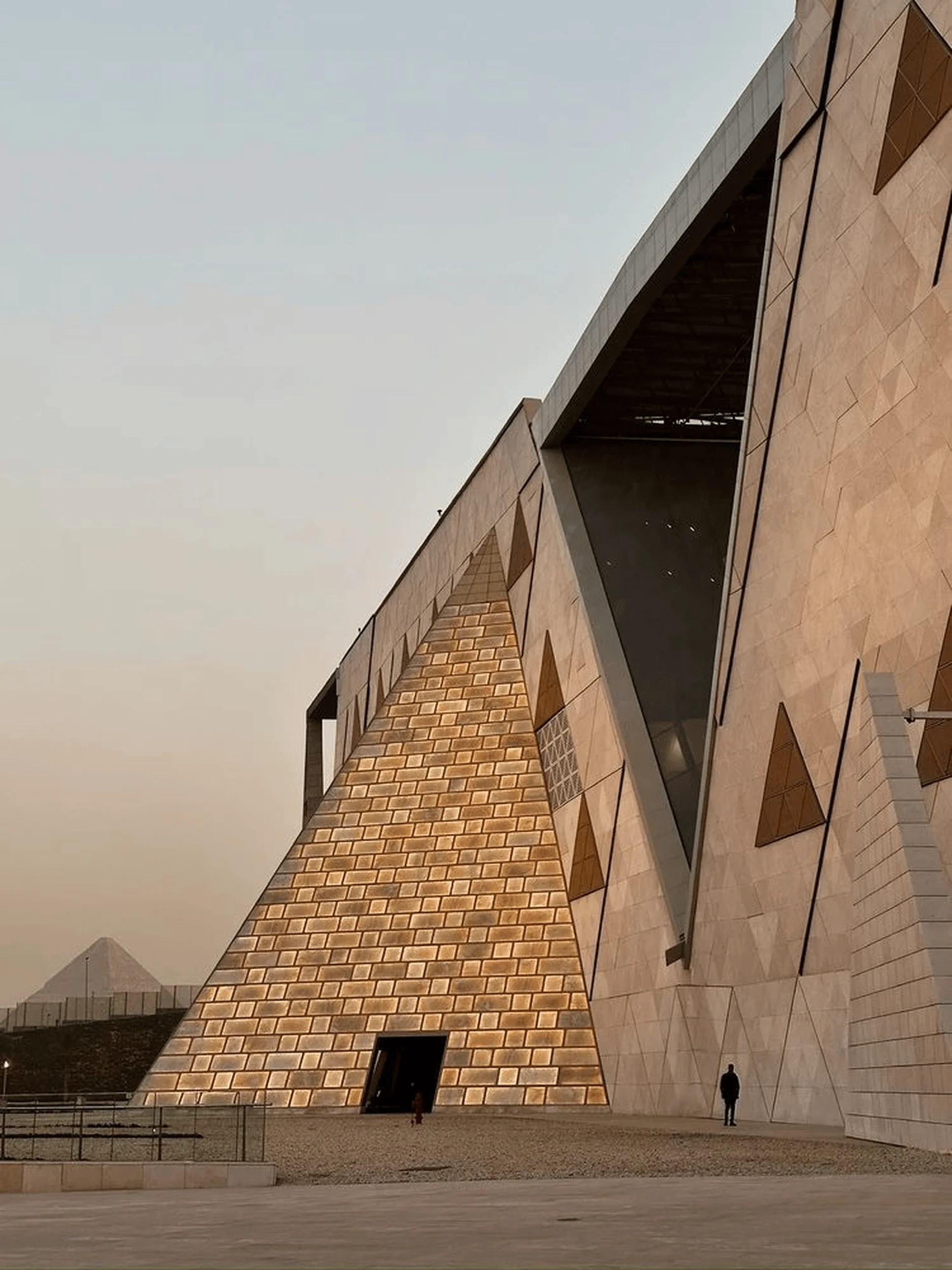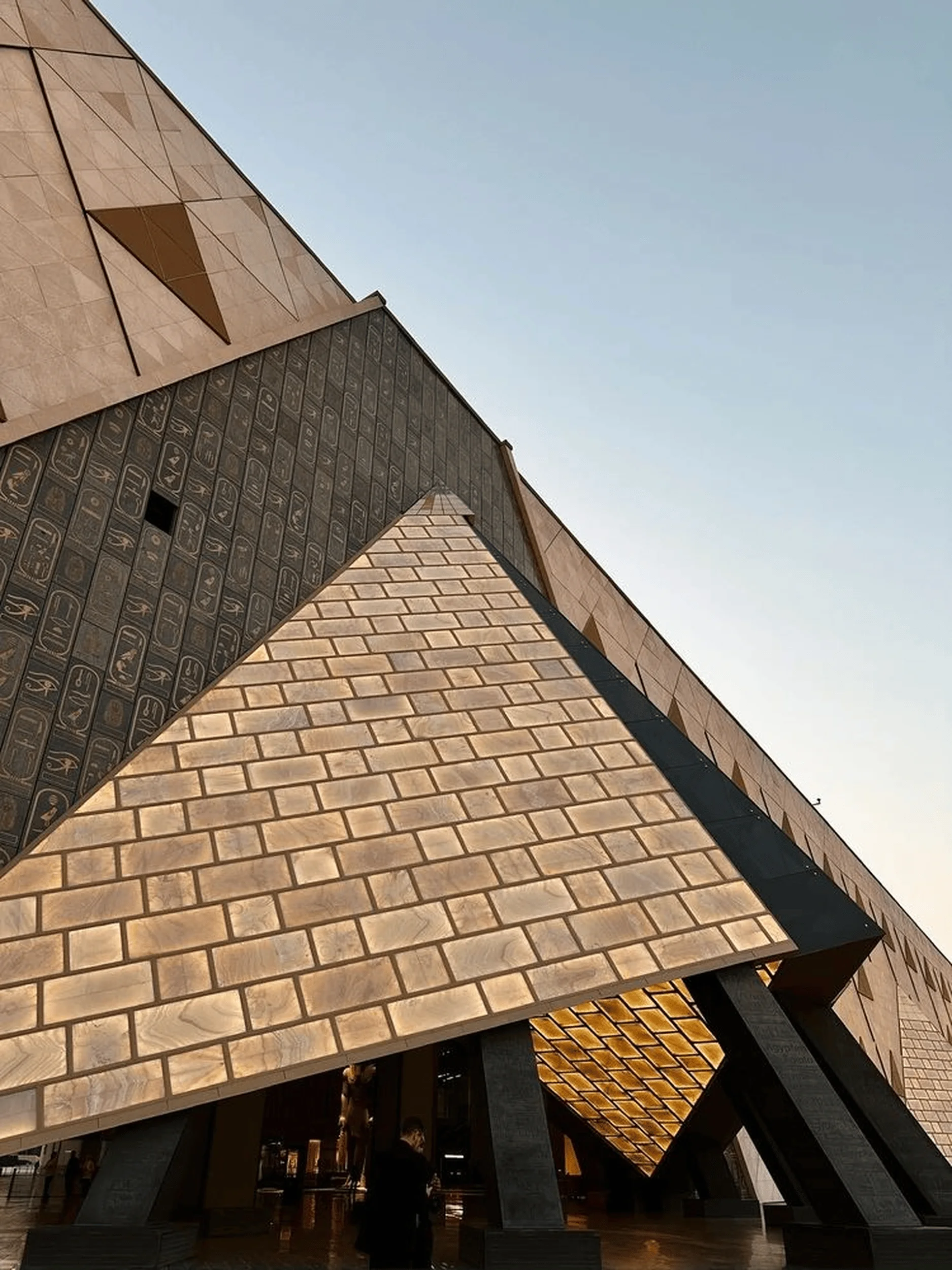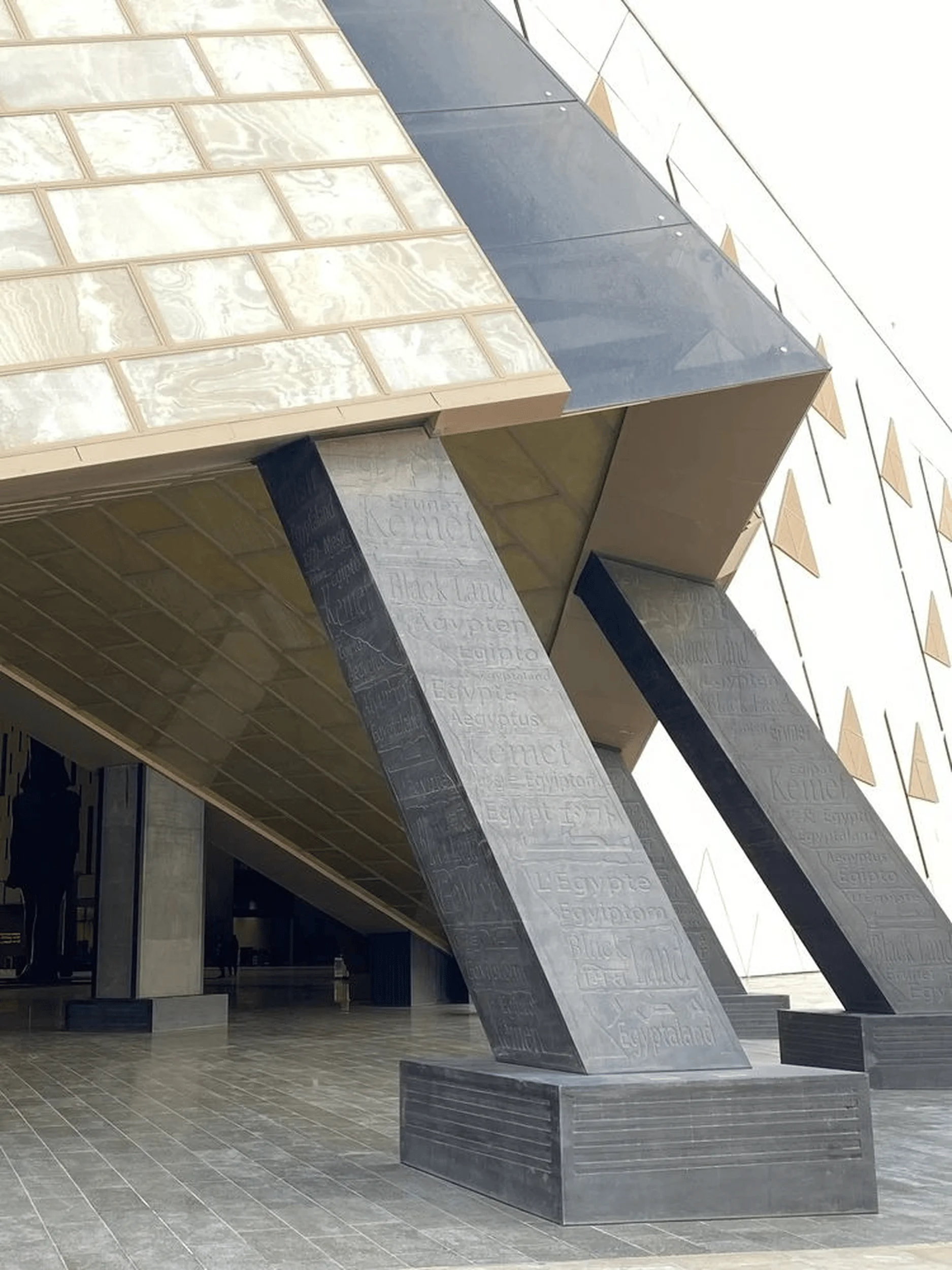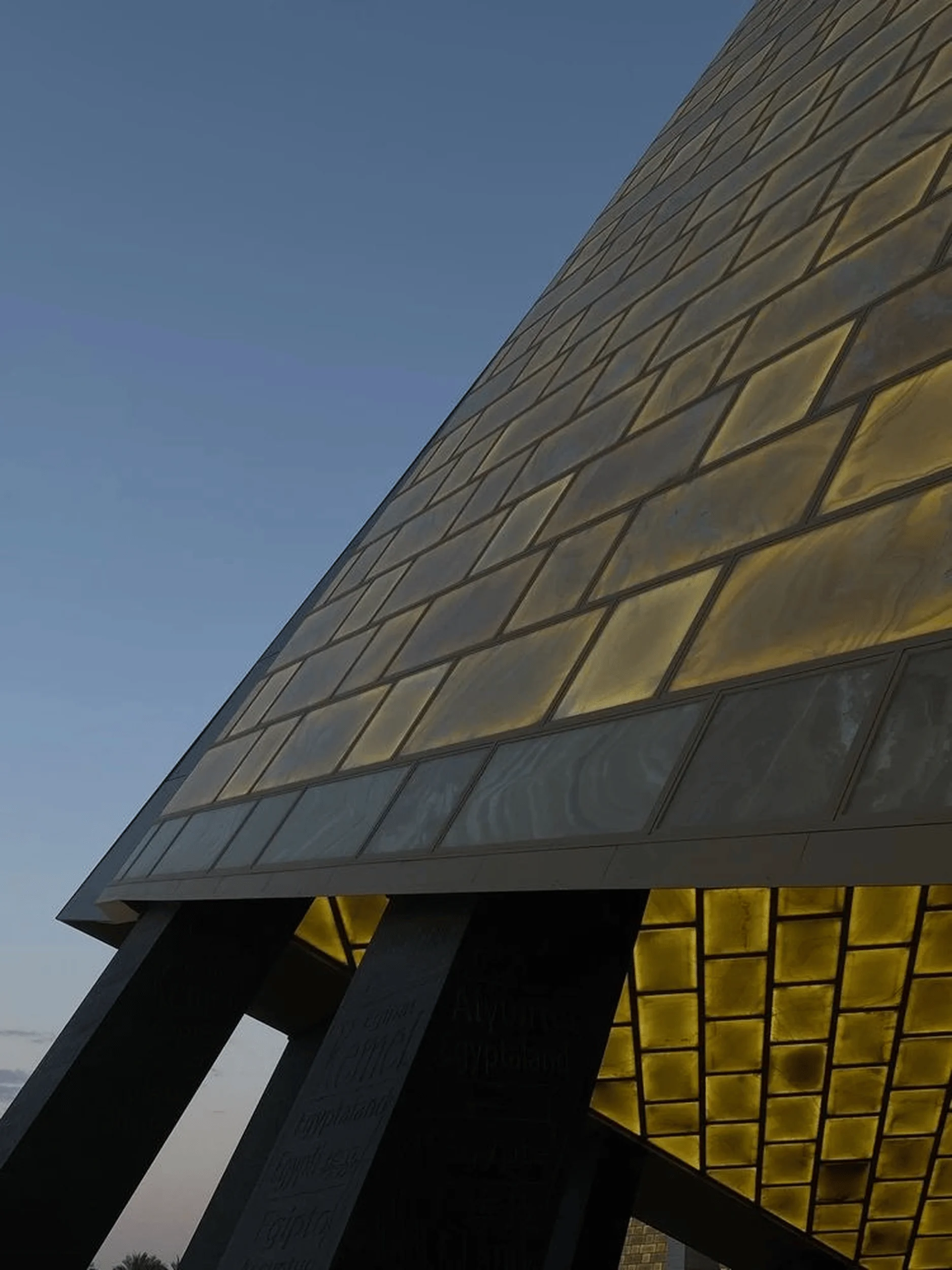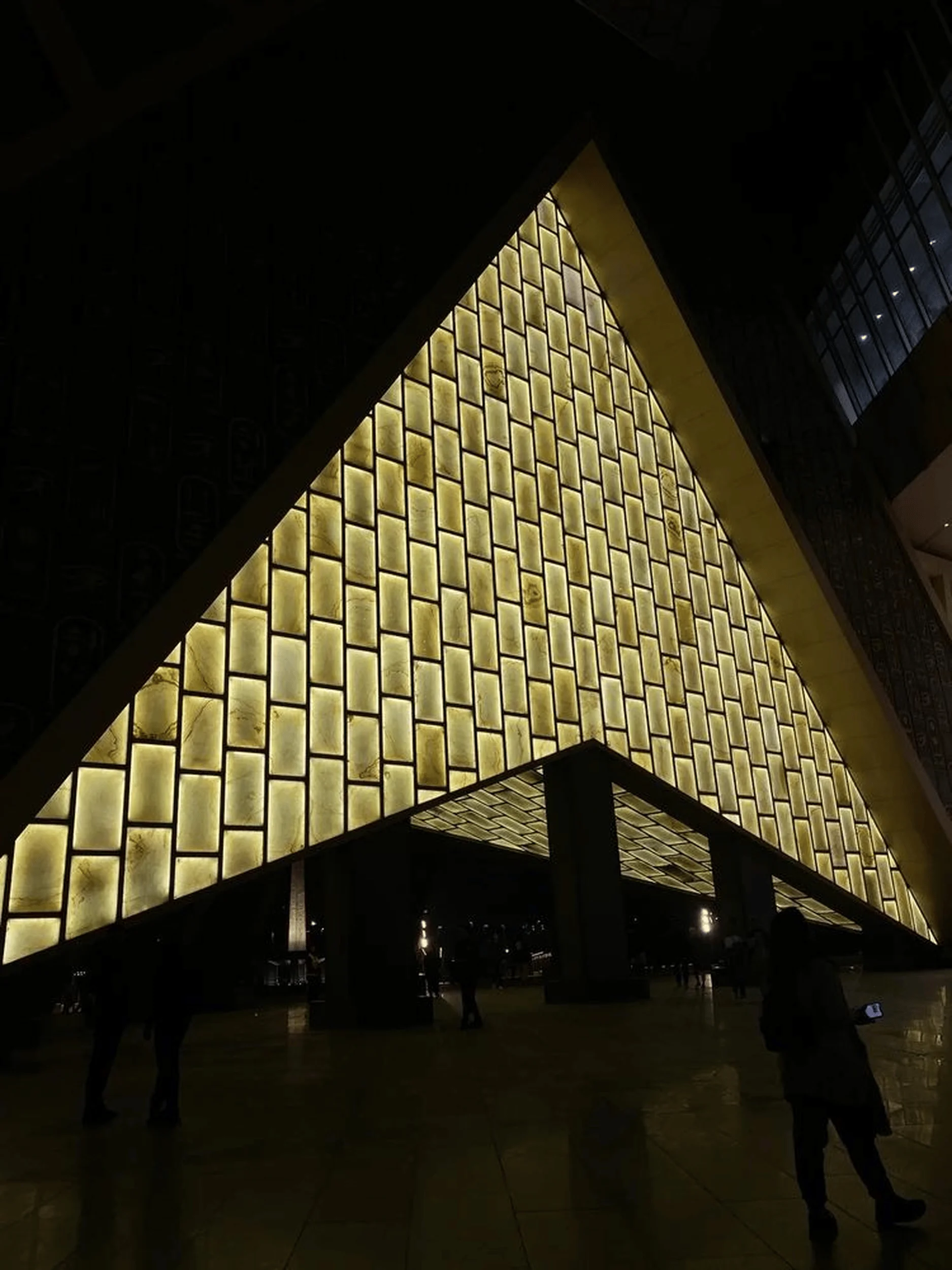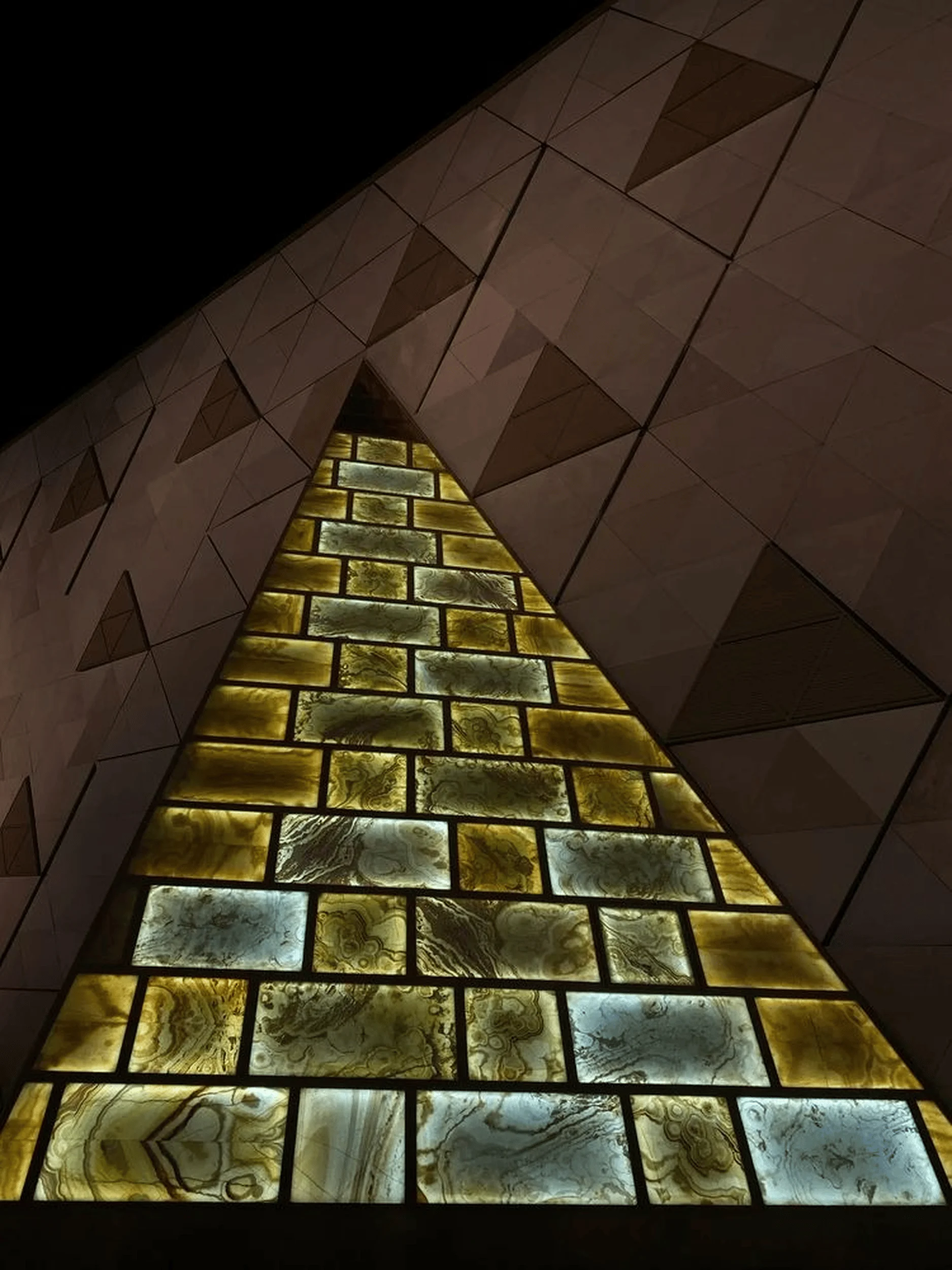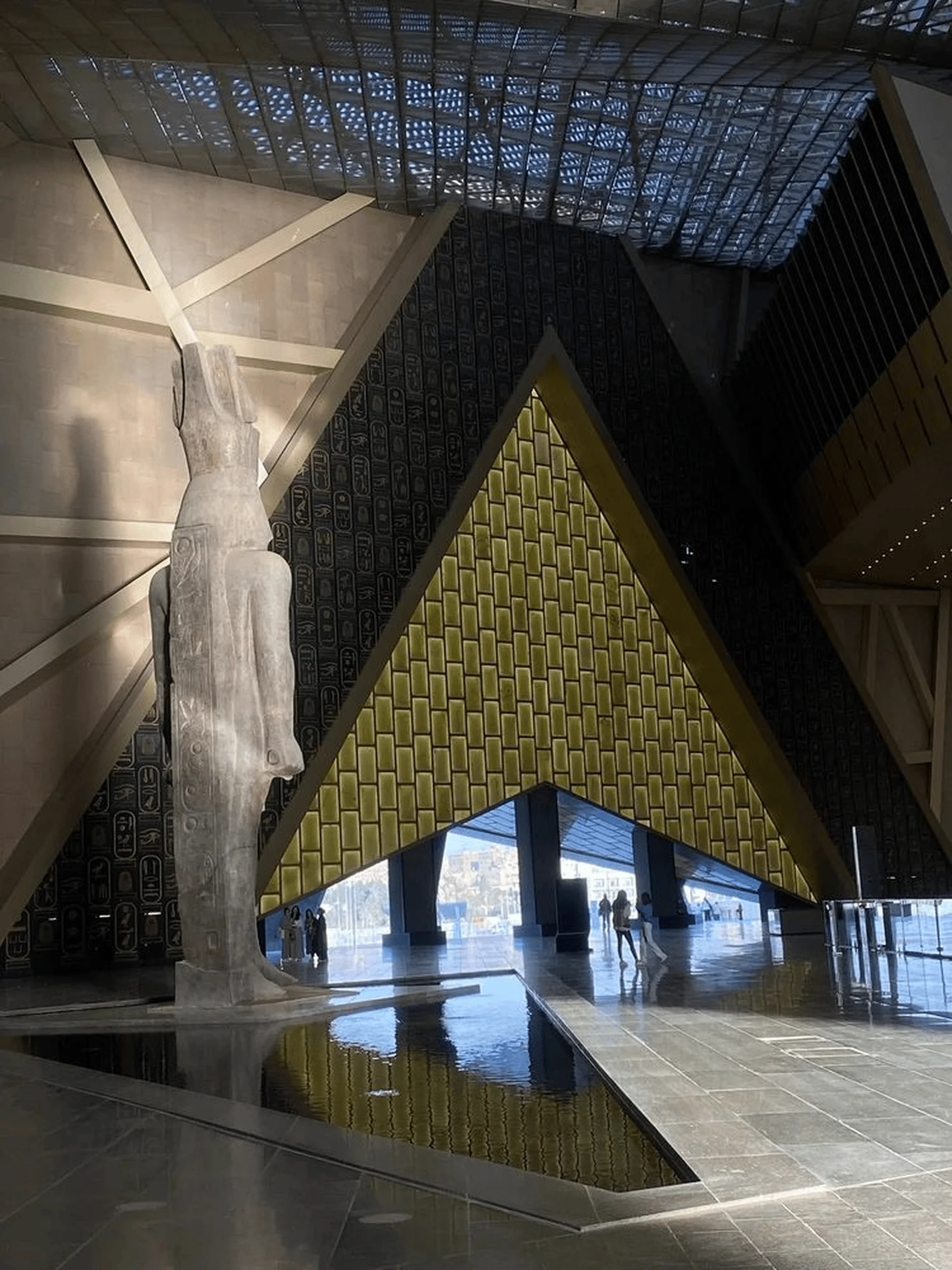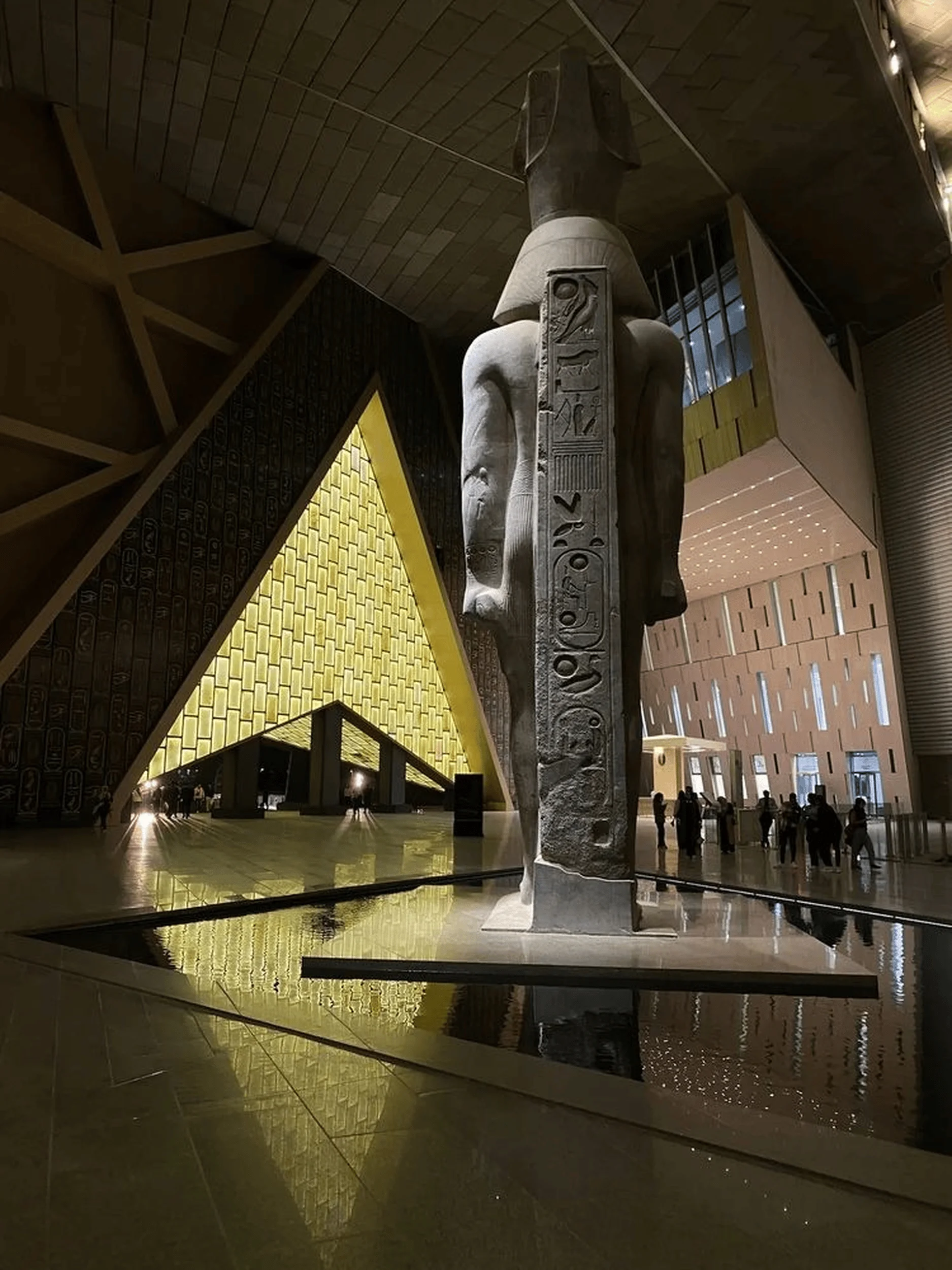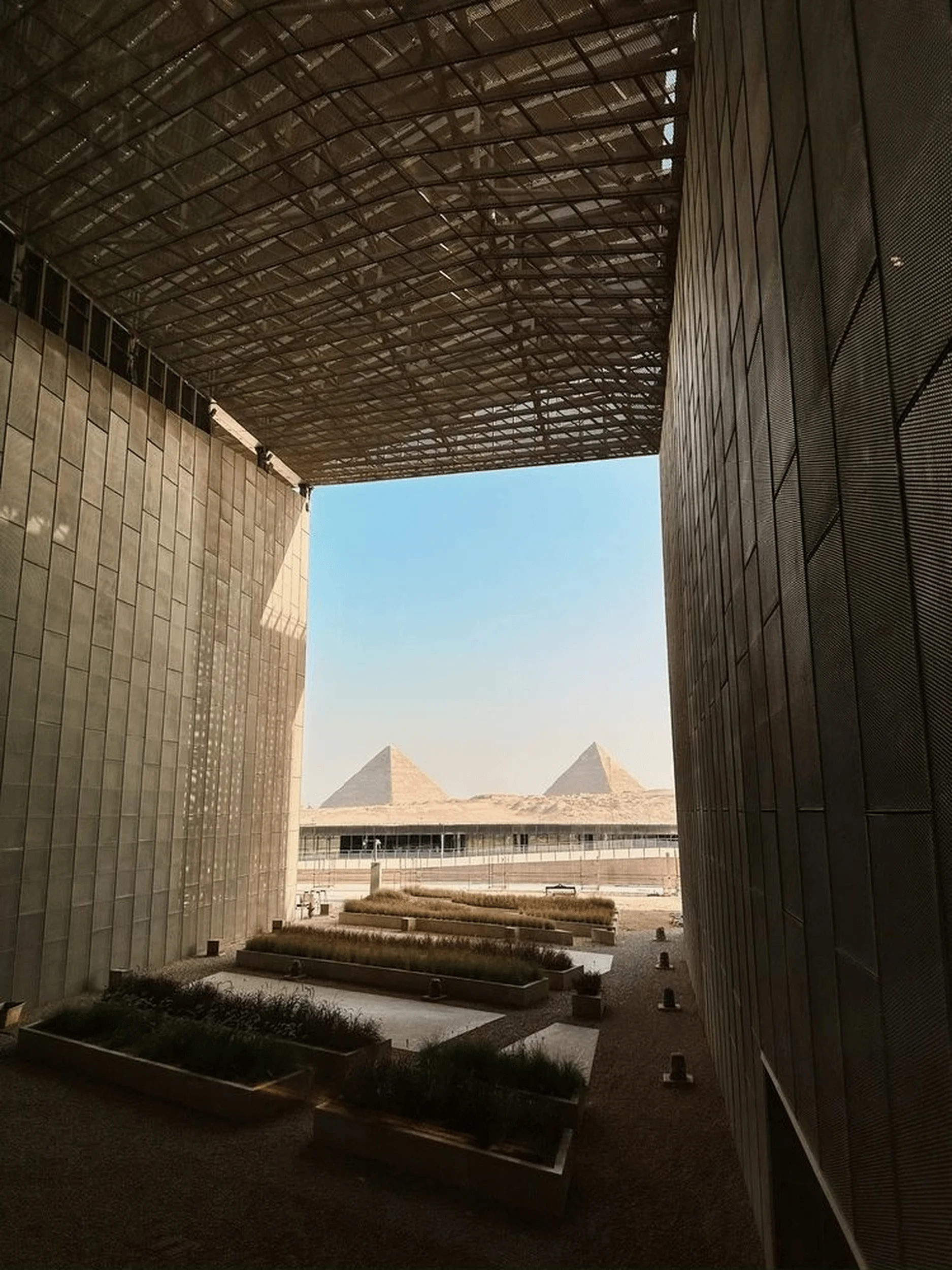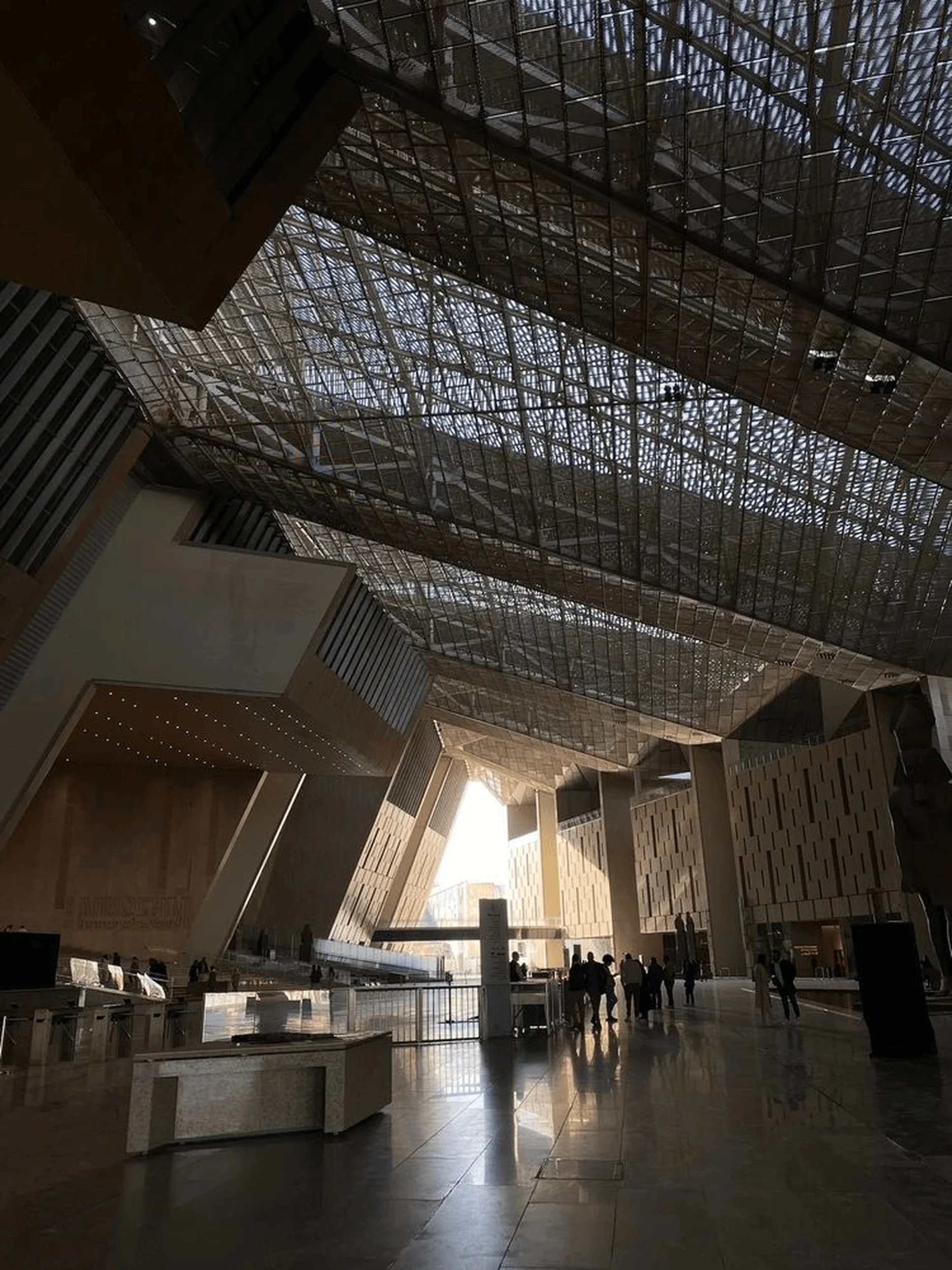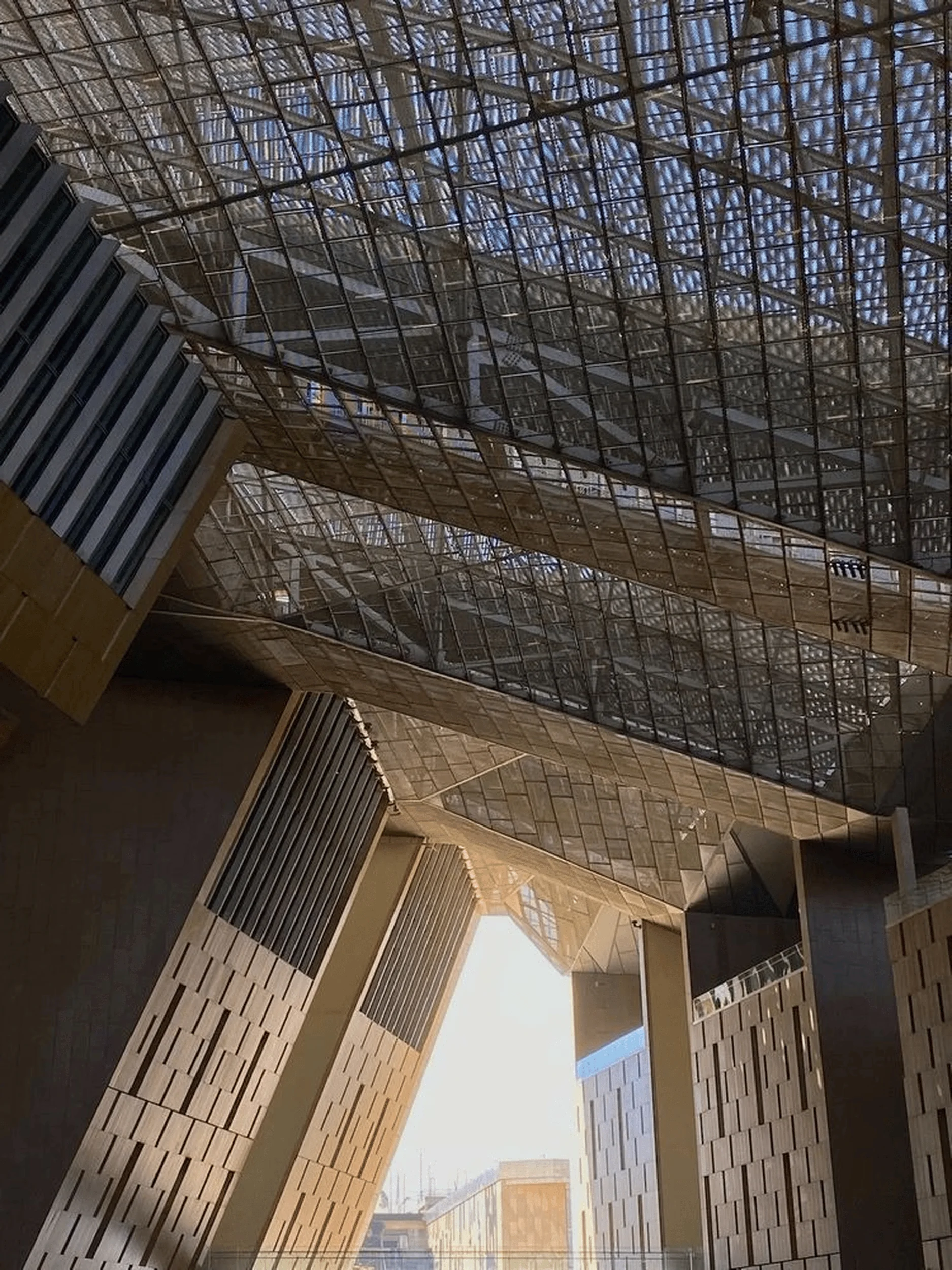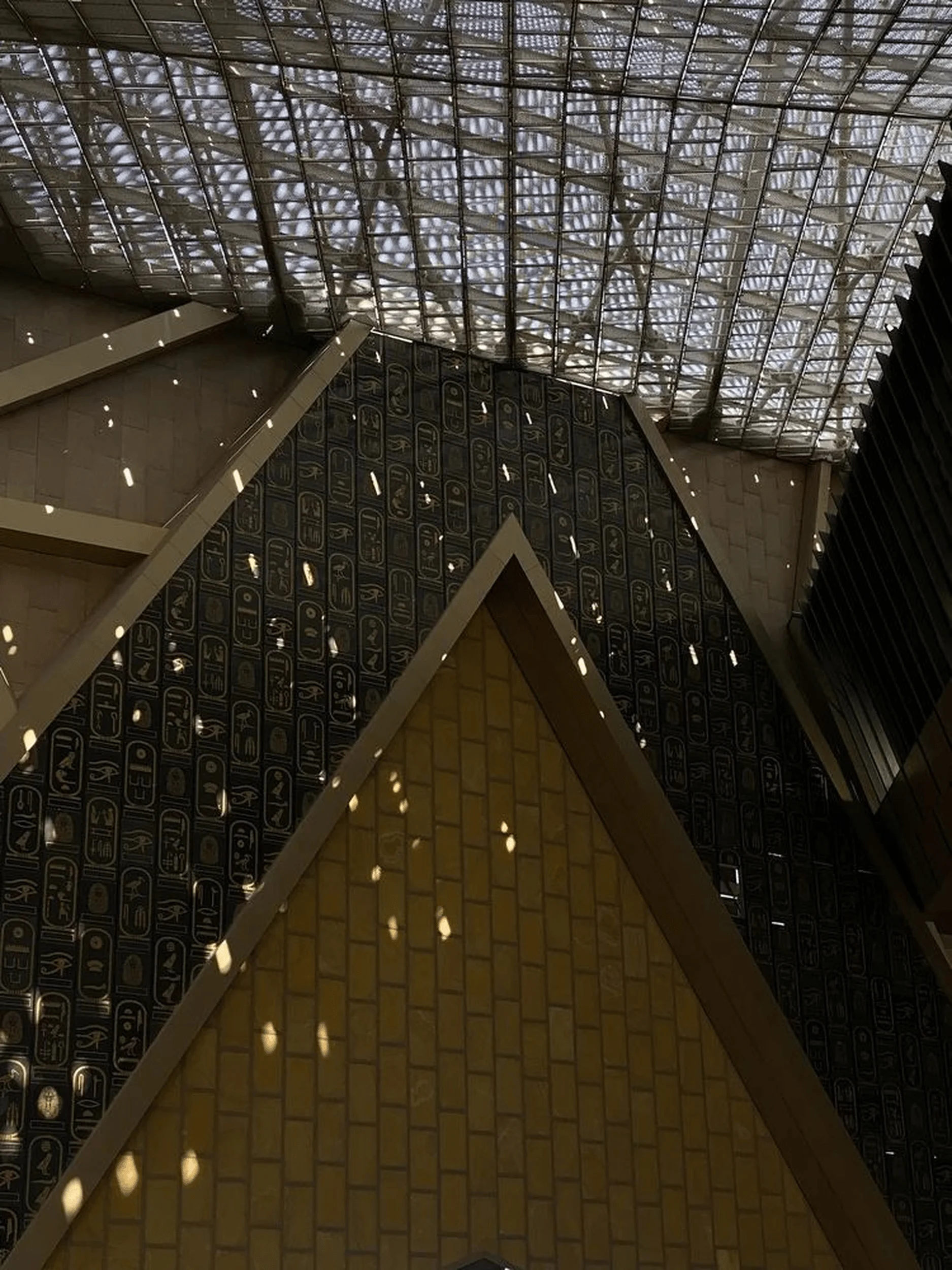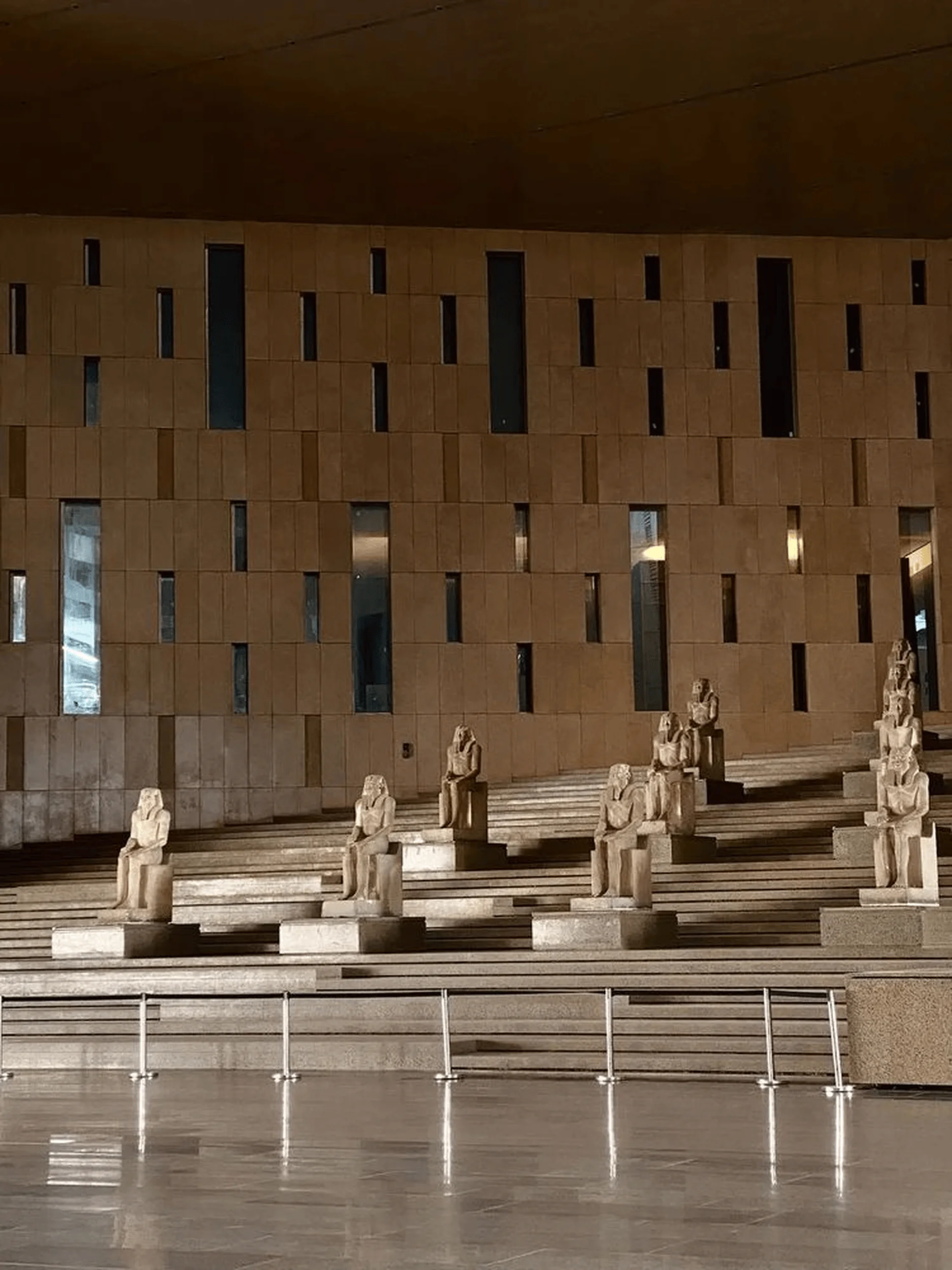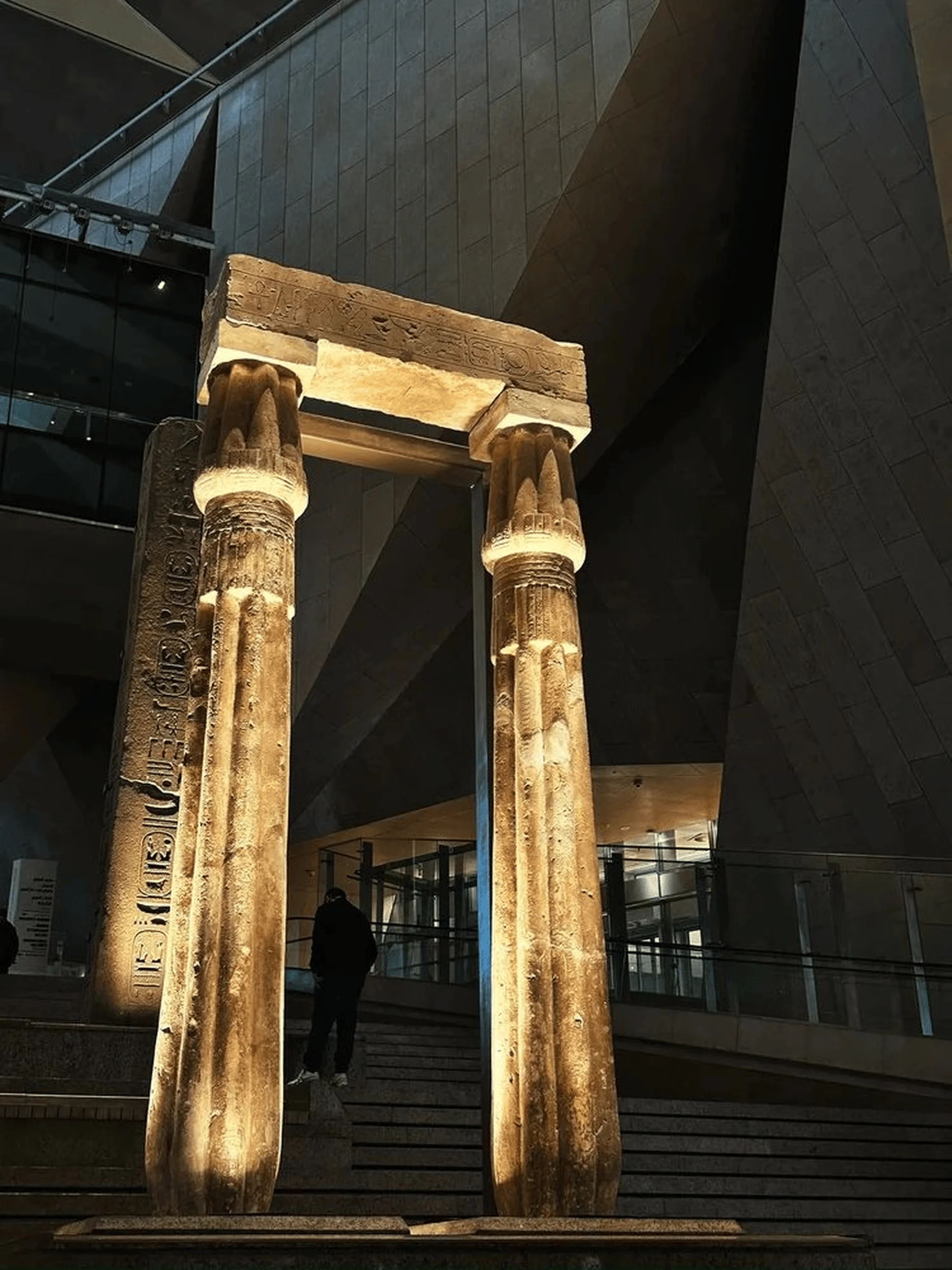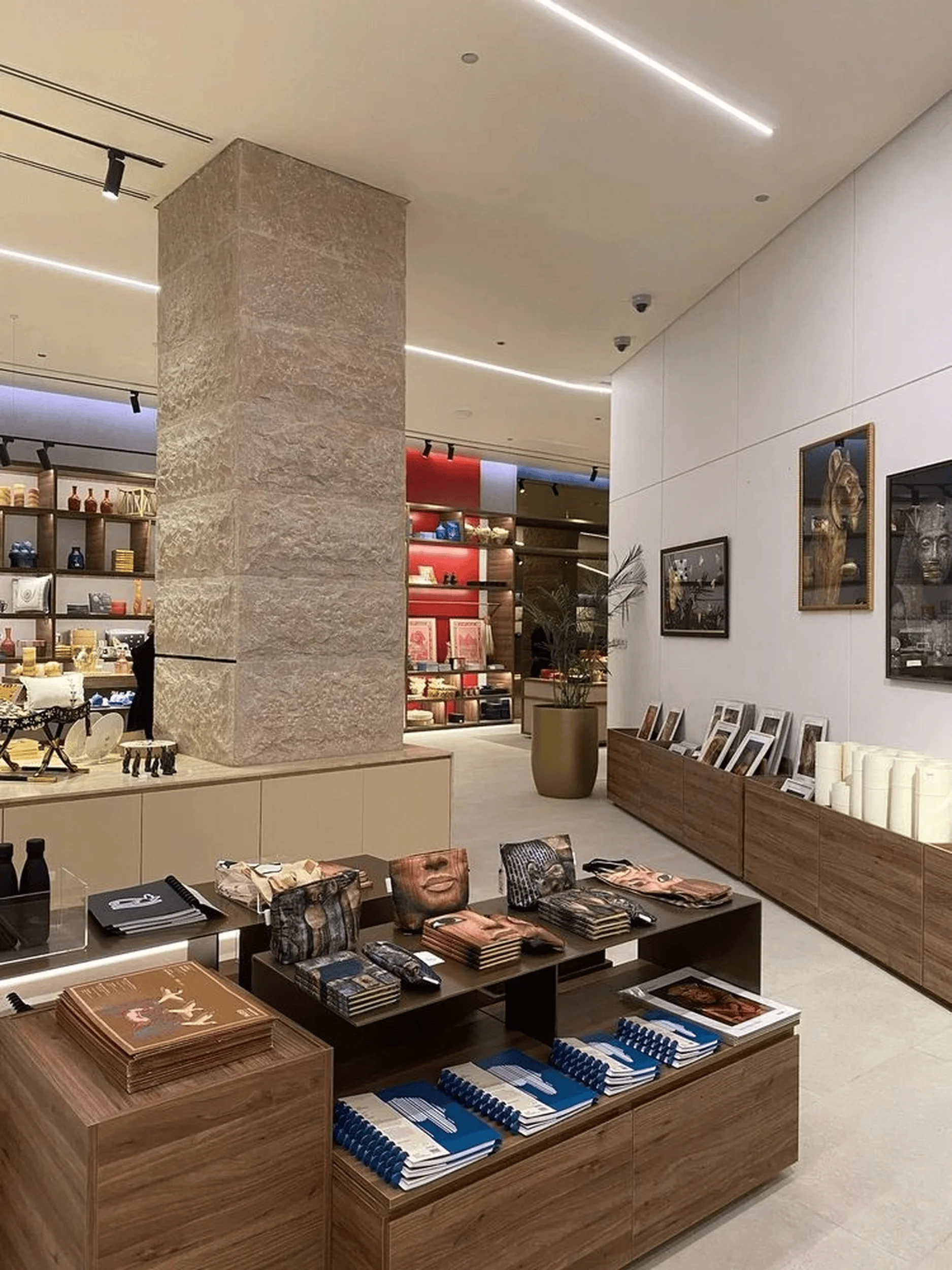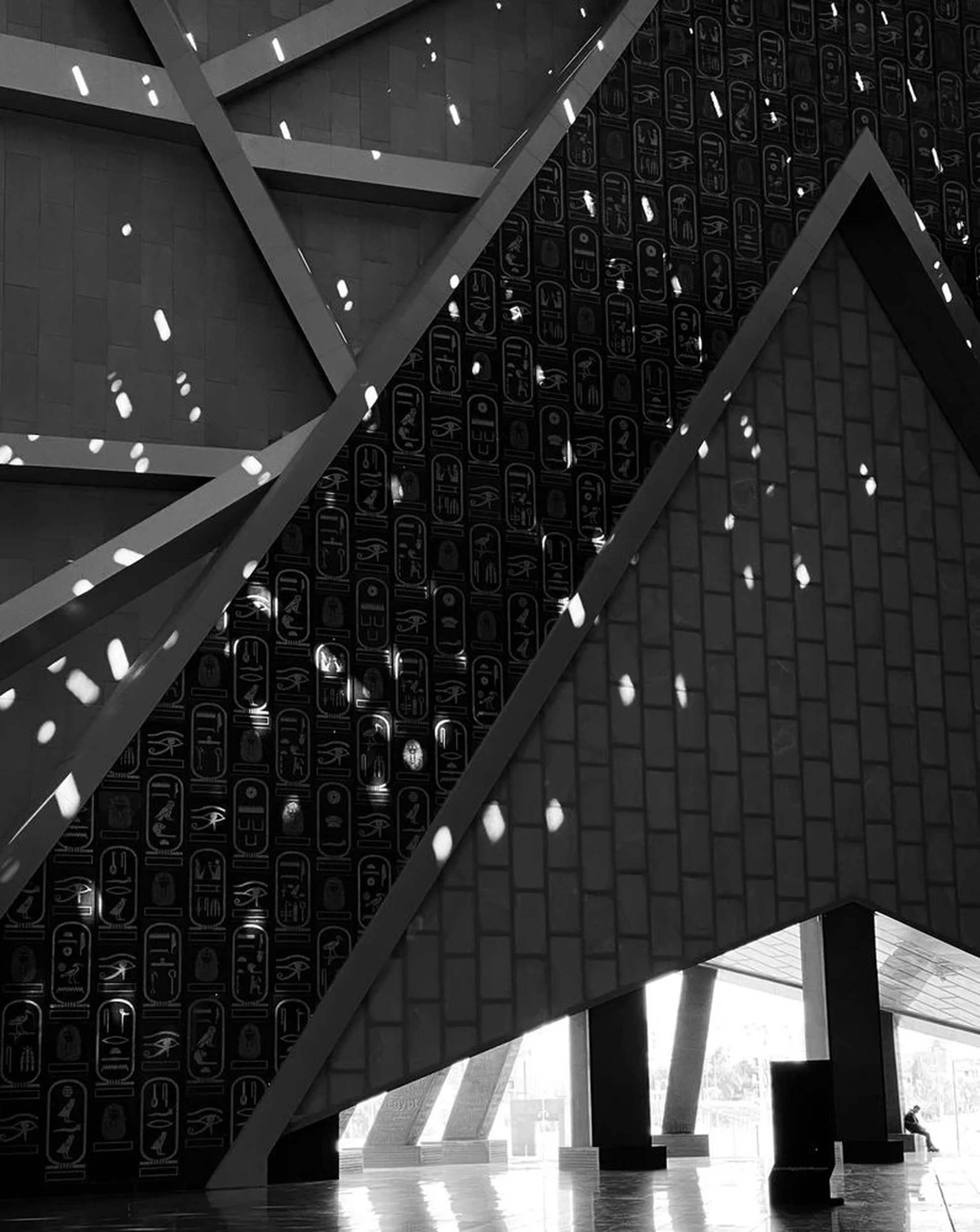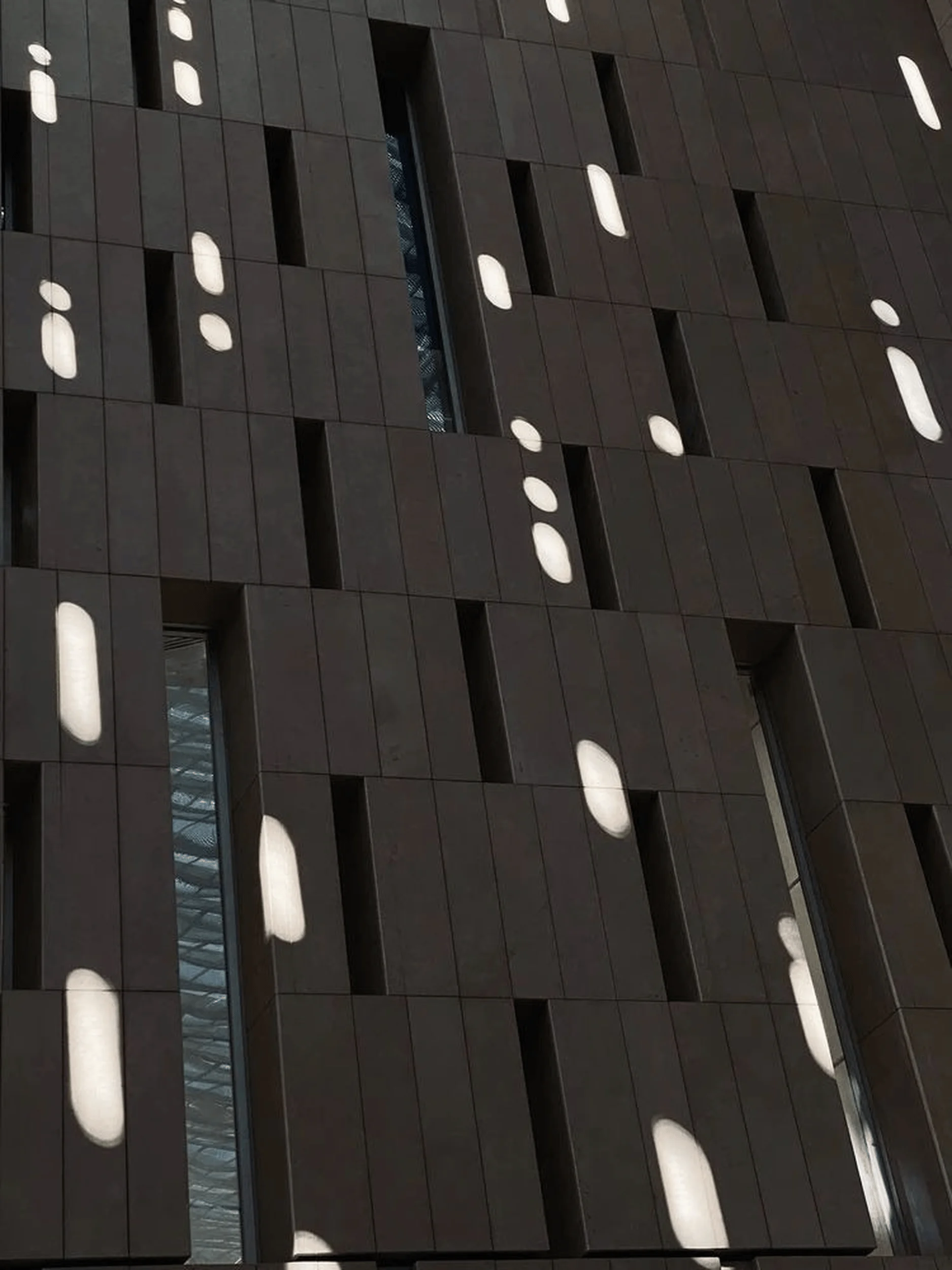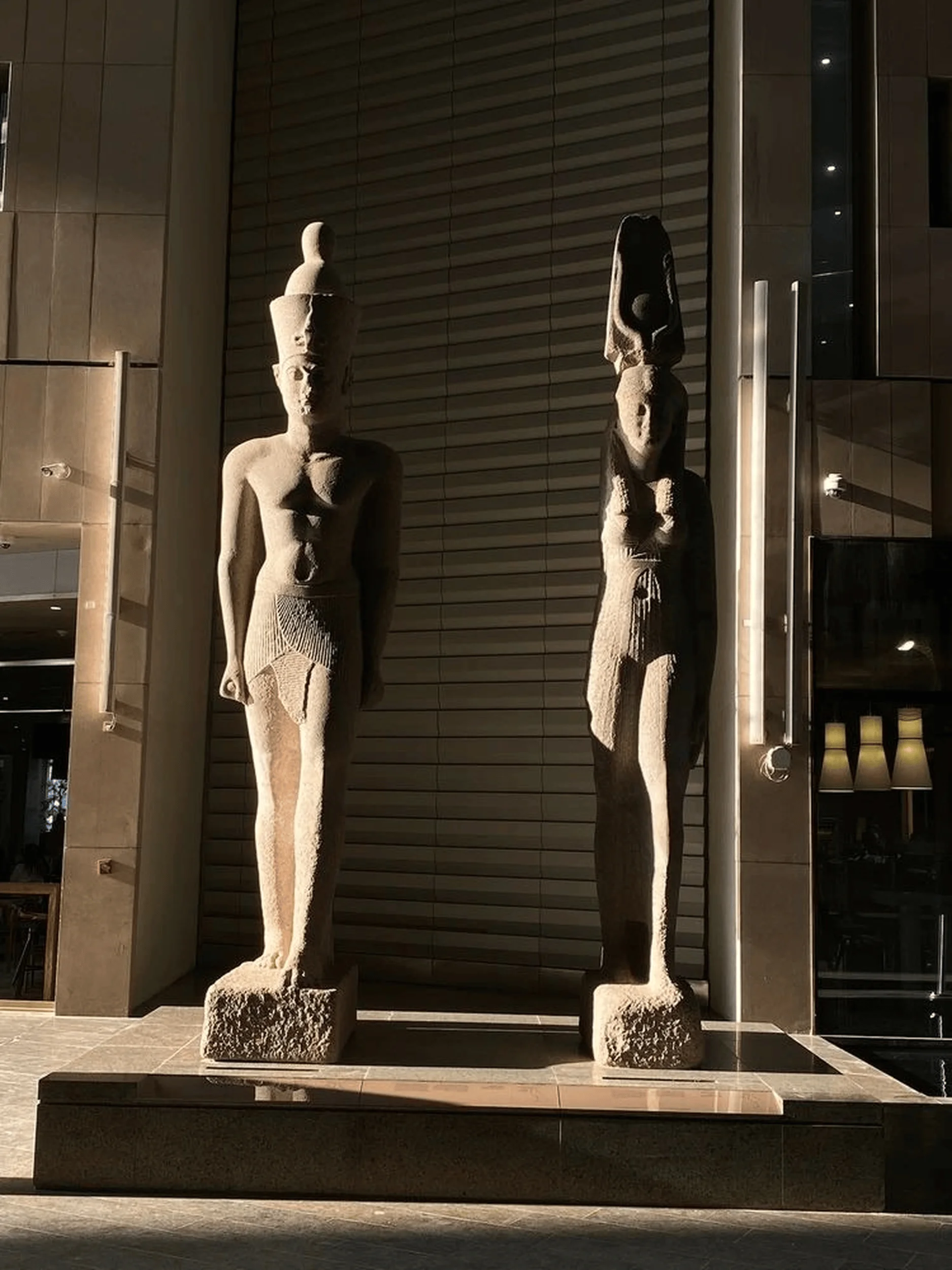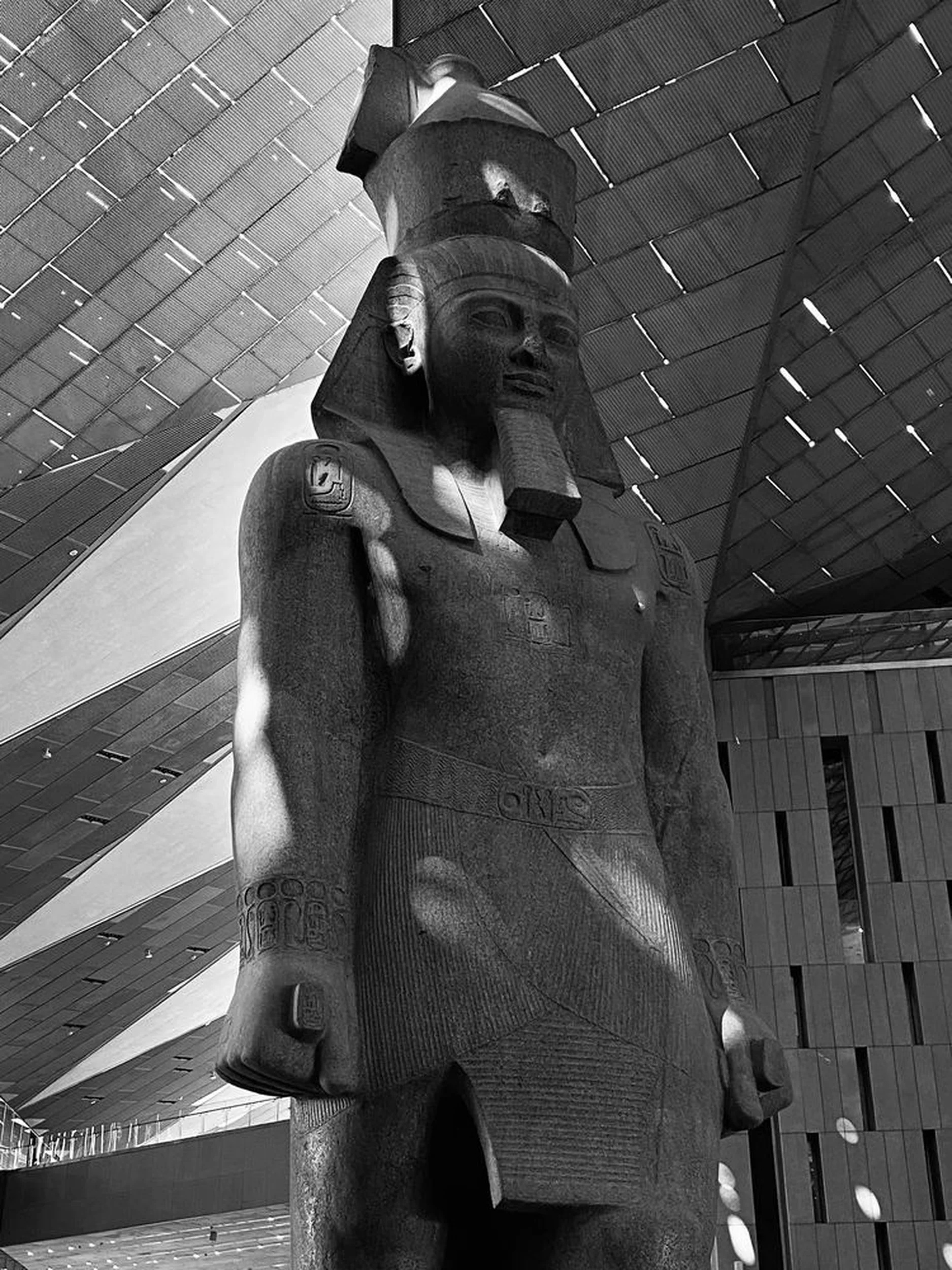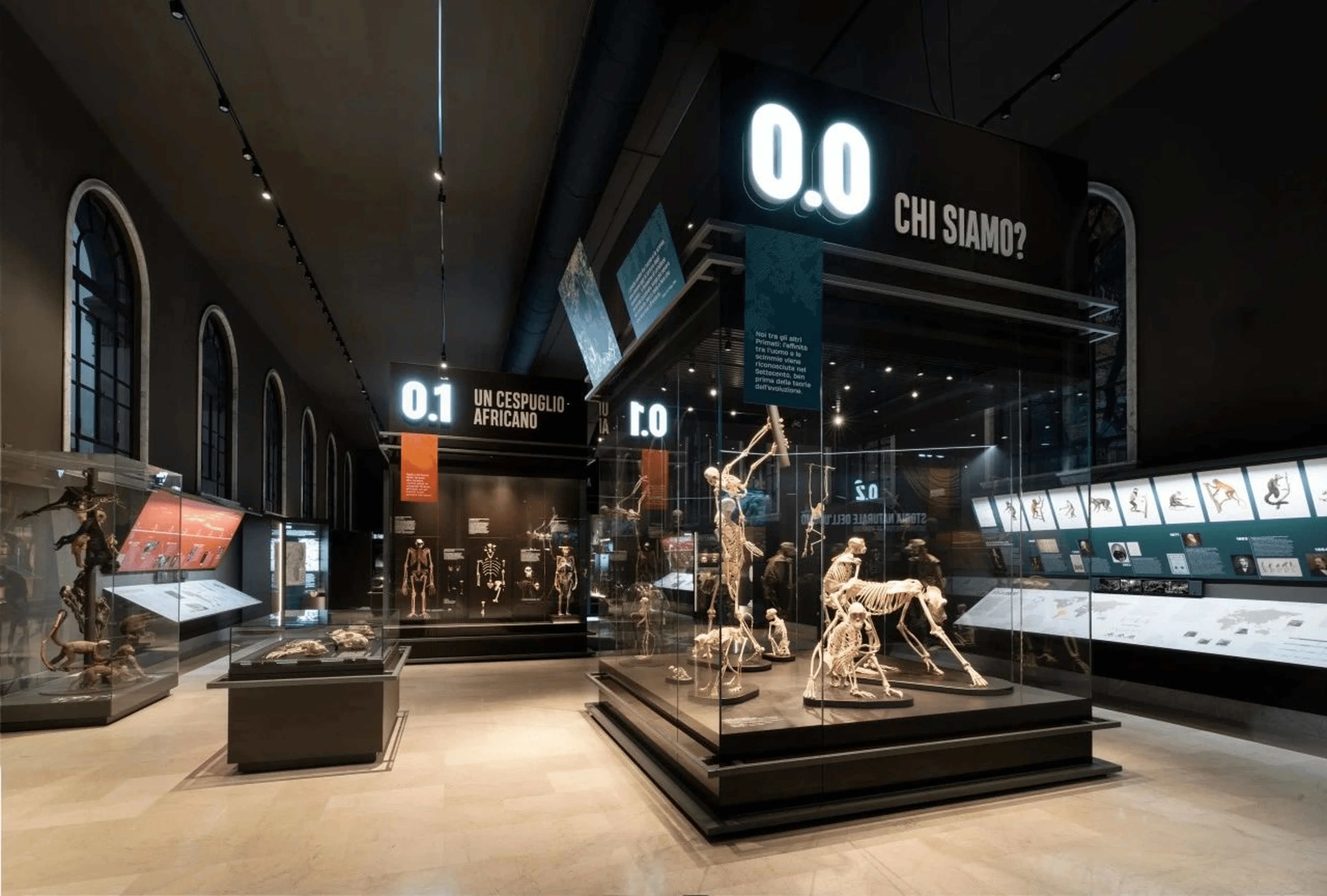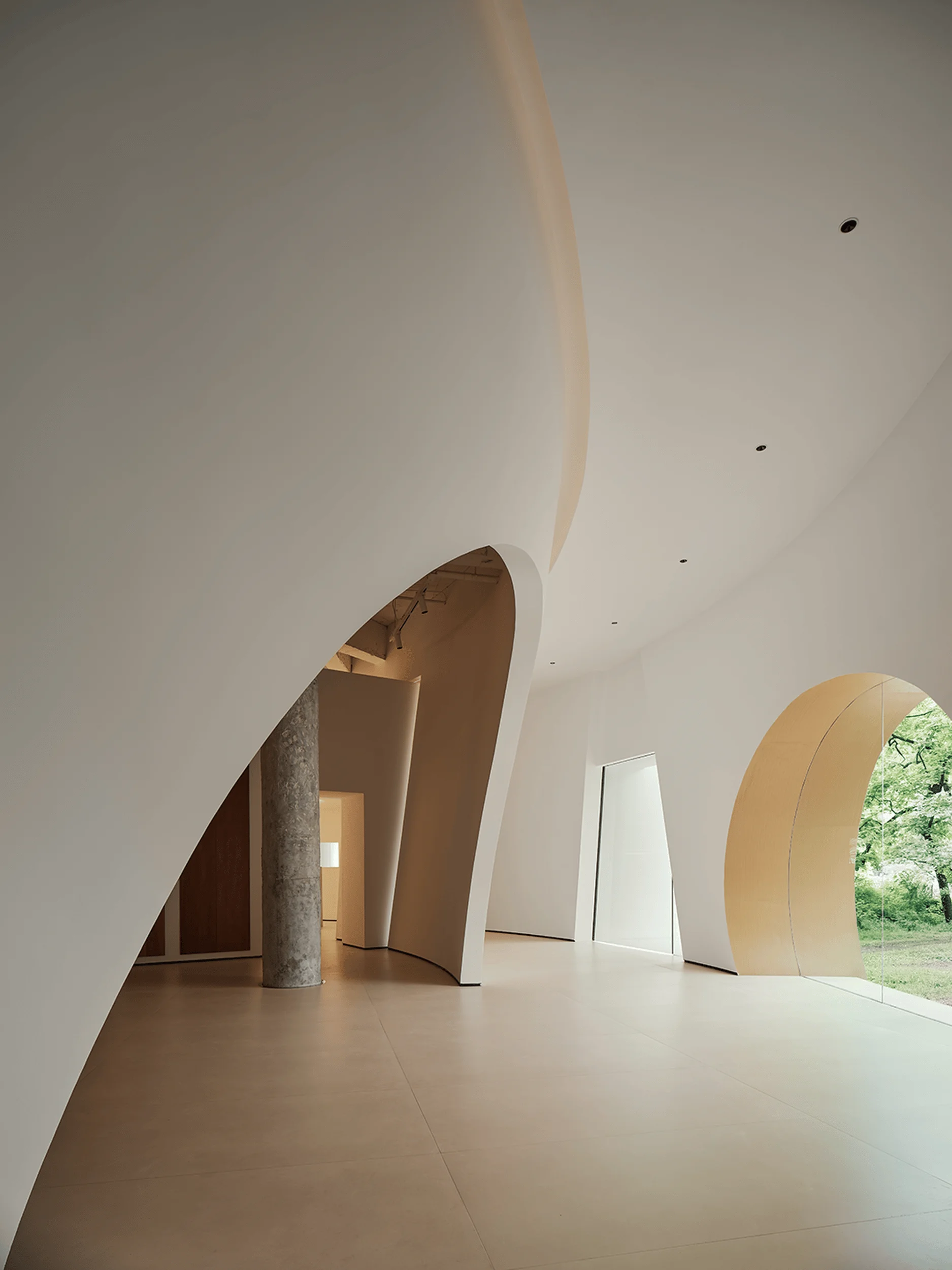Grand Egyptian Museum in Cairo, Egypt, designed by Heneghan Peng Architects, showcases ancient Egypt.
Contents
Project Background: A Landmark for Egyptian History and Culture
The Grand Egyptian Museum (GEM), located in Cairo, Egypt, is a monumental project designed by Heneghan Peng Architects. This museum, which houses over 100,000 artifacts spanning the entirety of Egyptian history, has faced several delays and hurdles, but is now finally set to open to the public. The museum’s design is a testament to the intersection of modern architecture and ancient heritage, serving as a prominent cultural hub for Egypt and a significant landmark in the city’s landscape. The design of the museum draws inspiration from the surrounding landscape, specifically the Giza Pyramids, showcasing the interplay of ancient and contemporary architectural styles. It aims to provide a comprehensive journey through Egyptian history and showcase the vast collection of artifacts in a respectful and engaging manner, emphasizing the richness and significance of this ancient civilization. The museum is located in close proximity to the iconic Giza pyramids, offering visitors a unique experience that blends cultural and historical exploration. It is situated in a way that allows it to seamlessly connect with the surrounding environment and contribute to the overall historical and cultural landscape of Egypt. The Grand Egyptian Museum is a project that embodies the nation’s pride in its heritage, and its impact will extend far beyond its local significance, representing a key element in boosting Egypt’s reputation as a global hub of culture and history. tag: grand egyptian museum architecture
Design Concept and Objectives: Blending Past and Present
The architectural concept behind the Grand Egyptian Museum is a harmonious blend of modern design and ancient Egyptian aesthetics. The architects, Heneghan Peng Architects, sought to create a building that would not only house and protect a vast collection of artifacts but also serve as a tribute to the rich history and culture of Egypt. The museum’s stone exterior is designed to integrate seamlessly with the surrounding landscape and desert environment. Notably, the design features triangular openings in the facade created from locally sourced alabaster. This unique design element contributes to the building’s aesthetic appeal and subtly alters the museum’s appearance, producing dramatic changes from day to night that seem to emulate the shifts of the surrounding landscape. The design of the museum showcases a skillful integration of architectural features with the surrounding environment, reflecting the architects’ sensitivity to the context and the desire to blend the building seamlessly with the natural landscape. The design team also emphasized sustainability in the design of the museum, striving to create a building that is both energy-efficient and environmentally conscious, using sustainable materials and practices to minimize the museum’s environmental impact. The museum’s design prioritizes the visitor experience, and offers a comprehensive and immersive journey through ancient Egypt’s captivating history and culture. tag: grand egyptian museum design
Functional Layout and Spatial Planning: A Journey Through Time
The museum is thoughtfully organized around three distinct visual axes, each strategically aligned with the pyramids in the background. These axes divide the museum into distinct zones, guiding visitors on a chronological journey through the history of Egypt. The central area is a vast atrium, which serves as a hub for the permanent exhibition spaces. It offers visitors a central space to navigate to other areas of the museum and also serves as a space for different museum events or activities. The central atrium is located in the heart of the museum and is a focal point for the museum’s design. A huge statue of Ramses II, an Egyptian pharaoh, is placed within this grand atrium, providing a sense of historical grandeur and a sneak peek into the wonders of ancient Egypt. Visitors will step into a grand second courtyard beyond the main entrance, featuring a magnificent staircase with shaded canopies that leads to the original plateau level. This courtyard is designed to welcome visitors to the museum and create a sense of anticipation for the exhibits inside. The museum is designed with a focus on facilitating the visitor experience, offering a logical and educational path through Egyptian history, ensuring a smooth flow between different areas of the museum and enhancing the overall enjoyment and understanding of the exhibits. tag: grand egyptian museum interior design
Exterior Design and Aesthetics: A Harmony with the Landscape
The external design of the museum is a visual spectacle, and reflects the architects’ efforts to create a building that is both visually arresting and environmentally sensitive. The design echoes the timeless grandeur of the iconic Giza Pyramids. Heneghan Peng Architects have created a building that blends seamlessly into the surrounding landscape. The stone facade and use of alabaster lend a sense of serenity and harmony, while the triangular openings provide glimpses into the world of ancient Egypt. These triangular openings are a significant design feature and were formed out of locally sourced alabaster, allowing natural light to penetrate into the museum’s interior spaces and creating a luminous and ever-changing play of light and shadow. The exterior design also serves to subtly direct visitors towards the central axis of the museum. The exterior walls are reminiscent of the surrounding sandy landscape, particularly at night when the alabaster glows and illuminates the spaces in the evening. The use of alabaster is particularly striking and exemplifies the careful consideration the designers gave to the surrounding environment. tag: grand egyptian museum architecture design
Social and Cultural Impact: A National Treasure
The Grand Egyptian Museum is a significant undertaking that has the potential to transform Cairo’s cultural scene and significantly impact tourism. The museum is a key component of Egypt’s broader efforts to promote its rich history and heritage. The museum aims to promote Egypt’s history and culture on a global level. It will play a major role in bolstering Egypt’s reputation as a leading cultural destination and showcase the country’s diverse cultural heritage. The museum’s design is a testament to the country’s rich history and culture and a source of national pride. The museum is also expected to generate significant economic activity in the region, generating jobs and supporting local businesses. The opening of the museum is expected to create many employment opportunities for locals and help stimulate the local economy. tag: grand egyptian museum cultural heritage
Construction Process and Management: Overcoming Challenges
The construction of the Grand Egyptian Museum has been a complex and challenging endeavor. The project encountered several setbacks and delays during the construction process. It was originally scheduled for completion by the end of 2020, but faced various obstacles and challenges that pushed back the completion date. These challenges included funding issues, logistical challenges, and the need to incorporate new designs to the project. The museum’s scale and complexity have been a driving force behind the delays and setbacks, requiring careful planning and management. The project required significant logistical coordination to move large artifacts into the museum. In addition to the scale of the project, integrating new technology, designs and other unexpected challenges have led to delays during the construction process. However, the dedication of the teams involved, combined with the government’s commitment to preserving and promoting Egypt’s cultural heritage, ultimately led to the successful completion of the museum. tag: grand egyptian museum construction
Conclusion: A Monument to Egypt’s Past and Future
The Grand Egyptian Museum is a unique and exceptional achievement that stands as a testament to Egypt’s rich history and culture. It is a testament to Egypt’s cultural heritage and a significant contribution to the country’s cultural landscape. The museum offers an unforgettable experience for visitors and is sure to attract visitors from around the world. The museum’s opening represents a significant milestone for the country, and its impact on tourism, education, and cultural exchange is expected to be substantial. The museum is a point of pride and a source of inspiration for the people of Egypt. It offers a window into the past and serves as a symbol of hope for the future. The museum is designed to be an educational hub and a place for fostering understanding, exchange, and appreciation of Egyptian culture. It aims to leave a lasting legacy that will continue to inspire and educate for generations to come. tag: grand egyptian museum cultural center
Project Information:
Project Type: Museum
Architect: Heneghan Peng Architects
Area: 500,000 square meters
Year: 2023
Country: Egypt
Main Materials: Stone, Alabaster
Photographer: Farida Bustani


